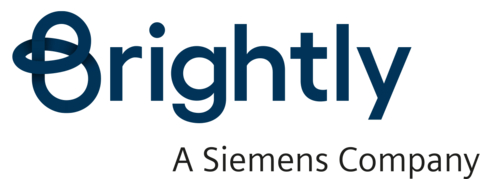New Study: Educators Turn to Technology Amidst Complex Infrastructure Challenges
New Study: Educators Turn to Technology Amidst Complex Infrastructure Challenges
Brightly’s findings highlight opportunities for short and long-term enterprise asset management
CARY, N.C.--(BUSINESS WIRE)--Education executives lack confidence in the condition of their existing assets and face roadblocks in improving asset health, but are optimistic about the opportunities technology presents, reveals a new survey from Brightly Software, a Siemens company, and the global leader in intelligent asset management solutions.
The asset health study analyzed insights from 520 C-Suite, operations executives and IT decision-makers across the education (K-12 and higher education), government, manufacturing and healthcare industries. The study found that education is second most likely among the industries to grade their assets as fair/poor (23%). Only 16% of respondents graded their assets an “A” -- the lowest percentage of the surveyed industries.
“Our educational infrastructure is a fundamental building block of our society. The maintenance of our schools is a long-term challenge, but also an immediate barrier to learning and safety,” said Kevin Kemmerer, CEO of Brightly. “The COVID-19 pandemic highlighted the importance of airflow, HVAC and space management, however, this survey points to challenges that extend far into the future. More intelligent management of assets is critical to helping educators assimilate and execute on both short and long-term infrastructure priorities.”
The survey pinpointed other challenges the education sector faces, including:
Budgetary and Resource Uncertainty
The American Infrastructure Investment & Jobs Act (IIJA) earmarked $550 billion for federal infrastructure investments, yet only 23% of those in education believe they’re likely to receive funds, compared to 55% of respondents across all industries, and 23% of respondents are unsure.
However, respondents have a clear picture of where these funds are needed – and technology is leading the way towards a smarter, safer and more sustainable future. Respondents ranked their top funding priorities as advancing digital infrastructure (48%) followed by repairing existing infrastructure (41%) and physical infrastructure (36%). As 51% note budget or financial resources as a main barrier to implementing new technology, which points to more uncertainty regarding the availability and impact of future funding, now is the time for organizations to monitor for additional funding that may become available to upgrade school systems.
Staff Shortages
Manpower – defined as hiring and retaining talent – is the second greatest challenge keeping education professionals up at night (15%). But only 30% of respondents cite it as a barrier to adopting new technology. There are significant opportunities for institutions to support remaining staff as facilities professionals retire through increased technology usage: 42% of respondents say they are planning to implement or hoping to implement automation and artificial intelligence to address their problems more efficiently.
With an unclear picture of available resources, schools must look to technology to solve talent-related challenges and improve asset health, which requires the right tools and data to ensure funds are allotted for the most impactful areas.
Climate, Sustainability and ESG: A Clear Growth Opportunity
While sustainability has become an emerging priority across sectors, the study shows many in education still haven’t engaged. Education is the least likely of all the industries surveyed to have an ESG strategy in place (53%), and 69% say ESG isn’t a high priority for the organization.
However, pressure is mounting to increase sustainability and play critical parts within ESG goals, especially with rising energy costs and environmental factors – whether natural disasters or extreme weather cancelling classes – directly affecting the condition and safety of schools. The U.S. Department of Energy’s Renew America’s Schools federal grant, part of the IIJA, may renew interest in ESG with $500 million set aside for energy efficient lighting, HVAC systems, building insulation and renewable energy sources, which may support schools in reprioritizing ESG initiatives.
Rising Asset Complexity
Poor infrastructure grades combined with resource, labor and environmental challenges demonstrate a broader concern for educational infrastructure. While technology offers solutions to these issues, its implementation is an uphill battle. Educators cited lack of understanding of technology’s value (33%) as a key barrier to tech adoption – as shown by roughly half (48%) using data every day to make decisions.
Data silos and a lack of centralized asset-tracking systems limit an organization’s ability to track and improve performance in real time. Tracking asset data – and putting it to work – allows teams to be more proactive and strategic in their asset management approach, supporting facilities professionals in breaking through industry challenges.
Across the world, there are districts that are demonstrating the path forward to a brighter future. Organizations like Hamilton Southeastern Schools rely on Brightly’s industry-leading EAM solutions to make operations efficient without increasing budget or staff. After adopting Brightly, the district doubled in size, yet increased efficiency with limited staff, all while maintaining building health.
Visit brightlysoftware.com to view the full data findings and download Brightly’s guide, five asset management trends for education, to explore how leaders can tackle the five most pressing education-specific market trends.
About the Study
This survey was conducted by Regina Corso Consulting and polled 520 C-Suite, operations executives and IT decision-makers in the U.S. and Canada who work in government, education, manufacturing or healthcare. For complete survey methodology, please contact brightly@pancomm.com.
About Brightly Software
Brightly, a Siemens company, enables organizations to transform the performance of their assets. Brightly is the global leader in intelligent asset management solutions. Brightly’s sophisticated cloud-based platform leverages more than 20 years of data to deliver predictive insights that help users through the key phases of the entire asset lifecycle. More than 12,000 clients of every size worldwide depend on Brightly’s complete suite of intuitive software – including CMMS, EAM, Strategic Asset Management, IoT Remote Monitoring, Sustainability and Community Engagement. Paired with award-winning training, support and consulting services, Brightly helps light the way to a bright future with smarter assets and sustainable communities. For more information, visit www.brightlysoftware.com.
Contacts
Kally Lavoie, brightly@pancomm.com, 617.502.4361
